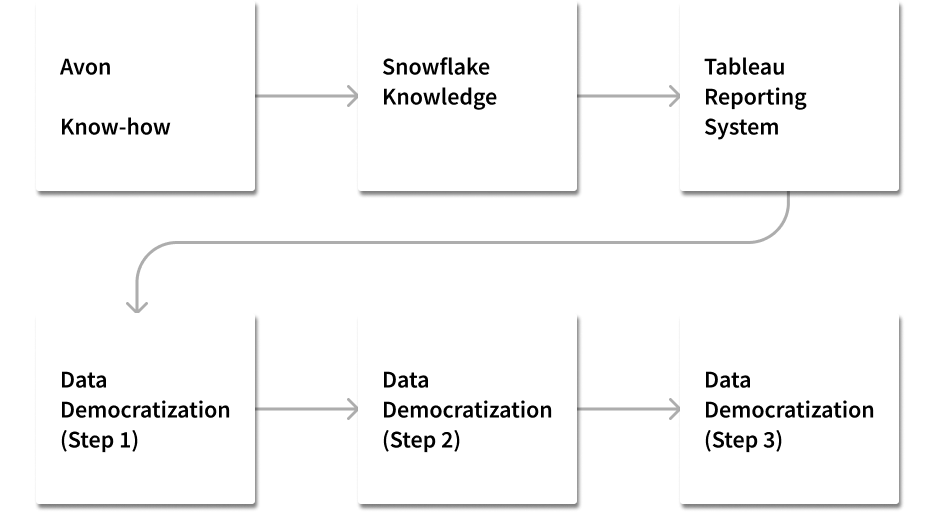Current Status
In the company's infrastructure systems, the live system's data was delivered daily to a system called CDW, transformed, and then transferred to the Oracle(Replica) databases, where a copy of Snowflake and the database were stored. The replica database was dedicated to only Turkey.
Although Tableau existed as a reporting system, it was rarely employed. Excel was used to make updates to some of the reports on a monthly basis, while others were updated on a quarterly basis. Excel files were used to store each of these reports. Reports maintained in Excel files required a lot of time and effort.
There was a problem with data accuracy in AVON Turkey. The data was compiled from various reports. When business units requested data, it could not be provided immediately, and analyses took longer.
Reporting needs
Excel was presently utilized to fulfill the reporting requirements; however, Tableau had a reporting tool that was not being actively used.
Challenge
Bottleneck
It was unclear which tables should be utilized, whether the statistics for Turkey were accurate, and how the Snowflake data structure operated.
Since no one was an expert on the Tableau side with the AVON know-how, the migration to Tableau, the reporting tool, could not be accomplished.
Data accuracy issues needed Snowflake knowledge, AVON business knowledge, and Tableau expertise to be resolved. Yet, no employees fulfilled these requirements.
What does the client company want?
In addition to demanding the tasks to be completed as quickly as possible and spending as little time as possible when updating the data, the company asked that the individuals who would be using snowflake tables to be trained.
The company wanted its reports to be user-friendly and visually readable when migrating them to Tableau.
In addition to the data being thorough and accurate, it was desired that data and tableau information be provided to the relevant users for the data's accuracy.
What solution did we offer?
AVON know-how was first learned by Trendify. Subsequently, the Snowflake data structure was learned. The tables were then examined, and the relevant individuals were informed of any missing structures. Additionally, the missing structures were transferred to the Snowflake. Following this, a part of the work to be performed by Snowflake was sent to the Snowflake database. Later, the Snowflake structure and knowledge gained by the Trendify expert teams were transferred to the authorized parties for them to use the database.
After learning the report's information in Excel, Trendify created the relevant data sources and imported them into the Tableau system. Using these data sources, Trendify expert teams enabled the generation of visual reports in Tableau. Trendify delivered monthly and quarterly report updates, saving both time and effort.
By merging both AVON business knowledge and Tableau knowledge, Trendify has proposed a system that everyone will utilize with the data democratization system. First, a data source was created and the required scripts were written in the Snowflake database for this system. Then, these data sources were transferred to Tableau. Training and workshops for Tableau were offered by Trendify. At the moment, the various business divisions in AVON are doing an in-depth analysis of the systems that Trendify has developed.
Effort spent

How is the project progressing?
At the moment, the project is being used actively for the reporting element as well as the reports in Tableau.
By using monthly and quarterly updates, business units perform analysis. Tableau dashboards created thanks to the data democratization system are also actively used by business units. Expert teams from Trendify were able to effectively execute the tasks that were demanded from them, and the desired outcome was accomplished.
Testimonials
“Dashboards prepared by the Trendify expert team allowed us to analyze quickly instead of manual reports. They continue to support us in the analytical process.”
Pınar Sevgi
Avon-Head of Data Analytics (TMEA)

